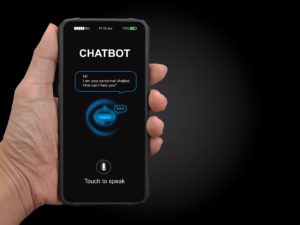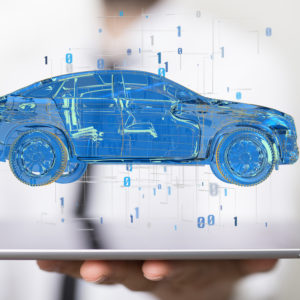
Implementing Chatbots For Lead Generation And Customer Service In Car Dealerships
In the highly competitive world of car dealerships, effective lead generation and exceptional customer service are crucial for success. One technology that has emerged as a game-changer in these areas is chatbots. Chatbots, powered by artificial intelligence (AI), have the potential to revolutionise car dealership operations by providing instant responses, scalable interactions, and valuable customer insights. In this blog, we will explore the benefits of implementing chatbots in car dealerships and provide insights and strategies for leveraging this technology effectively.
Understanding Chatbots and Their Benefits for Car Dealerships
Chatbots are software applications that simulate human-like conversations with users. They can be programmed with predefined rules and keywords or equipped with AI and machine learning capabilities to understand and respond to natural language. The benefits of using chatbots in car dealership operations are manifold:
- 24/7 availability and instant response: Chatbots can be available round the clock, providing immediate responses to customer inquiries and ensuring no potential lead or customer is left unattended.
- Scalability to handle multiple inquiries simultaneously: Unlike human agents, chatbots can handle multiple conversations simultaneously, ensuring efficient and timely interactions with customers even during peak times.
- Improved customer experience and satisfaction: Chatbots offer personalised and prompt assistance, guiding customers through their car buying journey or addressing their service-related queries, leading to enhanced customer satisfaction.
- Cost-effectiveness compared to human agents: Investing in chatbot technology can be more cost-effective in the long run compared to hiring and training a large team of human agents.
- Data collection and customer insights: Chatbots can gather valuable data about customer preferences, behaviour, and pain points, enabling car dealerships to better understand their target audience and tailor their marketing and customer service strategies accordingly.
Types of Chatbots for Car Dealerships
There are different types of chatbots that car dealerships can utilise, depending on their specific needs and resources:
- Rule-based chatbots: These chatbots are programmed with predefined rules and keyword triggers. They follow a predetermined set of responses based on the input they receive. Rule-based chatbots are ideal for handling frequently asked questions and providing quick and accurate information.
- AI-powered chatbots: These chatbots leverage AI and machine learning algorithms to understand and respond to natural language. They continuously learn and improve from user interactions, allowing for more sophisticated conversations and providing a more human-like experience.
- Hybrid chatbots: Hybrid chatbots combine the capabilities of both rule-based and AI-powered chatbots. They use rules for simpler queries and AI algorithms for more complex interactions, striking a balance between efficiency and personalization.
Implementing Chatbots for Lead Generation
Effective lead generation is a primary goal for car dealerships. By implementing chatbots strategically, dealerships can capture valuable leads and automate the follow-up process. Here are key strategies for implementing chatbots for lead generation:
- Identifying lead generation objectives and goals: Clearly define the specific objectives and goals for lead generation to align the chatbot implementation accordingly. Whether it’s capturing contact information, scheduling test drives, or providing price quotes, having clear objectives will guide the design and functionality of the chatbot.
- Designing chatbot conversations to capture lead information effectively: Craft chatbot conversations that guide users towards sharing their contact details and preferences seamlessly. Implement intuitive forms or conversational flows to capture lead information efficiently.
- Integrating chatbots with lead management systems or CRM tools: Integrate chatbots with your existing lead management systems or customer relationship management (CRM) tools. This integration ensures that the captured leads are seamlessly added to your database, enabling efficient lead nurturing and follow-up.
- Automating follow-up processes and nurturing leads generated by chatbots: Configure automated follow-up processes to engage and nurture the leads captured by chatbots. This could include sending personalised emails or scheduling reminder notifications to keep the leads engaged and interested.
- Monitoring and analysing chatbot performance for continuous improvement: Regularly monitor the performance of your chatbot in terms of lead generation. Analyse metrics such as lead conversion rates, engagement levels, and user feedback. Use this data to identify areas for improvement and make data-driven optimizations to enhance lead generation effectiveness.
Enhancing Customer Service with Chatbots
In addition to lead generation, chatbots can significantly enhance customer service in car dealerships. They can provide instant responses to frequently asked questions, assist customers in browsing inventory and scheduling test drives, handle service inquiries and appointment bookings, and personalise customer interactions. Here’s how chatbots can elevate customer service:
- Providing instant responses to frequently asked questions: Chatbots can handle a wide range of common inquiries such as dealership hours, vehicle availability, financing options, and more. By providing instant responses, they save time for both customers and dealership staff.
- Assisting customers in browsing inventory and scheduling test drives: Chatbots can guide customers through the vehicle selection process, helping them narrow down their choices based on their preferences and scheduling test drives directly within the chatbot interface.
- Handling service inquiries, appointment bookings, and reminders: Customers can use chatbots to inquire about service appointments, check service status, and receive reminders for routine maintenance. Chatbots can streamline the service scheduling process, ensuring efficient customer service.
- Personalising customer interactions through data integration: By integrating with customer data systems, chatbots can access information about previous interactions, vehicle preferences, and purchase history. This enables them to provide personalised recommendations and offer tailored assistance to customers.
- Escalating complex queries to human agents when necessary: While chatbots excel in handling routine inquiries, there may be complex or sensitive issues where human intervention is required. Chatbots can seamlessly escalate such queries to human agents, ensuring a smooth transition and providing a higher level of support.

Designing Effective Chatbot Conversations
The design of chatbot conversations plays a crucial role in engaging customers, guiding them towards solutions, and providing a satisfactory user experience. Consider the following strategies when designing chatbot conversations:
- Understanding customer needs and pain points: Conduct thorough customer research to understand the common pain points, questions, and preferences of your target audience. This knowledge will help you design chatbot conversations that directly address customer needs and provide relevant solutions.
- Developing a conversational flow that guides customers towards solutions: Design a logical conversational flow that leads customers step-by-step towards their desired outcome. Ensure that the chatbot can understand user inputs and respond with appropriate and helpful information.
- Implementing natural language processing (NLP) for better understanding and response: If using AI-powered chatbots, leverage natural language processing (NLP) capabilities to understand user queries more accurately. NLP enables chatbots to comprehend variations in phrasing, synonyms, and context, resulting in more effective and human-like interactions.
- Using rich media, such as images and videos, to enhance interactions: Enrich chatbot conversations by incorporating visual elements such as images and videos. Visual aids can help customers better understand features, specifications, and other information related to vehicles.
- Incorporating proactive engagement to initiate conversations: Utilise proactive engagement techniques to initiate conversations with website visitors or customers who have shown interest. Prompt them with personalised offers, upcoming promotions, or relevant content, encouraging them to engage with the chatbot.
Ensuring a Seamless Customer Experience
A seamless customer experience is essential to maximise the effectiveness of chatbots in car dealerships. Consider the following practices to ensure a smooth and satisfactory customer journey:
- Testing chatbot performance and accuracy before deployment: Thoroughly test your chatbot’s performance and accuracy before deploying it live. Conduct extensive testing to ensure that the chatbot understands various user inputs and provides accurate and helpful responses.
- Providing clear instructions and fallback options for misunderstood queries: Design the chatbot interface to provide clear instructions and options to users when the chatbot doesn’t understand their queries. Include fallback options like transferring to a human agent or redirecting to relevant self-help resources.
- Training chatbots to handle various customer scenarios and edge cases: Train your chatbots to handle a wide range of customer scenarios and edge cases. This includes training them to handle complex queries, unusual requests, and handling frustrated or upset customers with empathy and understanding.
- Monitoring chatbot conversations to identify areas for improvement: Regularly monitor chatbot conversations to identify areas where the chatbot may be struggling or failing to provide satisfactory responses. Analyse user feedback and conduct sentiment analysis to uncover areas for improvement and further optimization.
- Integrating chatbots with other customer service channels for a seamless omnichannel experience: Ensure a seamless customer experience by integrating chatbots with other customer service channels such as phone support, email, or social media. This allows customers to switch between channels without losing context and ensures a cohesive and efficient experience.
Addressing Potential Challenges and Limitations
While chatbots offer significant benefits, it’s important to address potential challenges and limitations to set realistic expectations for both customers and dealership staff. Consider the following factors:
- Managing customer expectations regarding chatbot capabilities: Clearly communicate the capabilities and limitations of the chatbot to customers. Make it clear that while chatbots are powerful tools, there may be instances where human intervention or more specialised assistance is required.
- Handling situations where chatbots cannot provide satisfactory solutions: Identify scenarios where chatbots may struggle to provide satisfactory solutions, such as complex technical inquiries or highly specific customer requirements. Develop processes for seamlessly transferring such cases to human agents to ensure customer satisfaction.
- Ensuring data privacy and security in chatbot interactions: Data privacy and security are paramount in customer interactions. Implement robust security measures to protect customer data and ensure compliance with relevant data protection regulations. Clearly communicate your data privacy policies to customers.
- Regularly updating chatbot knowledge base to keep up with changes and new information: Car dealerships and inventory information can frequently change. Ensure that your chatbot’s knowledge base is regularly updated to reflect the latest vehicle models, pricing, promotions, and dealership information. An outdated chatbot may provide inaccurate or misleading information.
- Balancing chatbot automation with human touchpoints for complex or sensitive inquiries: While chatbots can handle a wide range of inquiries, there will always be situations that require a human touch. Strike a balance between chatbot automation and human interaction, ensuring that customers can seamlessly connect with human agents when needed.
Measuring Success and Optimising Chatbot Performance
Measuring the success of chatbots in lead generation and customer service is essential to identify areas for improvement and optimise performance. Consider the following strategies for measuring and optimising chatbot performance:
- Identifying key performance indicators (KPIs) for chatbot effectiveness: Determine relevant KPIs based on your objectives, such as lead conversion rates, customer satisfaction ratings, response time, and engagement levels. These metrics will help you gauge the effectiveness of your chatbot implementation.
- Analysing chatbot metrics such as response time, customer satisfaction ratings, and lead conversion rates: Regularly analyse chatbot-specific metrics to understand its performance. Monitor response times to ensure prompt assistance, track customer satisfaction ratings to evaluate user experience, and measure lead conversion rates to assess lead generation effectiveness.
- Gathering feedback from customers to understand their experience: Encourage customers to provide feedback on their chatbot experience. Gather insights through surveys or post-interaction feedback forms to understand their satisfaction levels, pain points, and suggestions for improvement.
- Iteratively improving chatbot responses and conversation flows based on data-driven insights: Leverage the data and feedback gathered to iteratively improve your chatbot’s responses and conversation flows. Analyse user interactions, identify patterns, and make data-driven optimizations to enhance user satisfaction and lead conversion rates.
- Aligning chatbot performance with overall business goals: Regularly assess how chatbot performance aligns with your overall business goals. Ensure that the chatbot implementation is contributing to lead generation, enhancing customer service, and driving operational efficiency. Make adjustments as necessary to align the chatbot strategy with your overarching objectives.
Future Trends and Opportunities for Chatbots in Car Dealerships
As technology continues to advance, there are exciting future trends and opportunities for chatbots in car dealerships. Consider the following areas for future development and exploration:
- Exploring emerging technologies, such as voice assistants and natural language understanding: Voice assistants and natural language understanding (NLU) capabilities are evolving rapidly. Integrating these technologies into chatbots can further enhance their ability to understand and respond to user queries in a more conversational and human-like manner.
- Integrating chatbots with social media platforms and messaging apps: As customers increasingly use social media platforms and messaging apps for communication, integrating chatbots with these channels presents opportunities for seamless interactions and enhanced customer engagement.
- Leveraging chatbot data for personalised marketing and sales strategies: The data collected by chatbots can be utilised to create personalised marketing and sales strategies. By analysing customer preferences and behaviour, car dealerships can tailor their promotional offers, product recommendations, and communication channels to increase conversions and customer satisfaction.
- Advancements in AI and machine learning for more sophisticated chatbot capabilities: Advancements in AI and machine learning are continuously improving chatbot capabilities. Enhanced natural language processing, sentiment analysis, and context understanding can enable chatbots to provide more accurate and personalised responses, further enhancing the customer experience.
- Embracing chatbot innovations to stay competitive in the evolving automotive industry: The automotive industry is evolving rapidly, with new technologies, online marketplaces, and changing customer preferences. Embracing chatbot innovations and staying ahead of the curve will be crucial for car dealerships to remain competitive and meet evolving customer expectations.
Implementing chatbots for lead generation and customer service can significantly enhance operational efficiency and customer satisfaction in car dealerships. With their 24/7 availability, scalability, cost-effectiveness, and data-driven insights, chatbots offer immense benefits. By understanding the different types of chatbots, designing effective conversations, ensuring a seamless customer experience, and measuring performance, car dealerships can unlock the full potential of chatbot technology. As the automotive industry continues to evolve, embracing chatbot innovations will be key to staying competitive and providing exceptional customer experiences. So, don’t wait—leverage the power of chatbots to transform your car dealership operations today.
Recent posts





